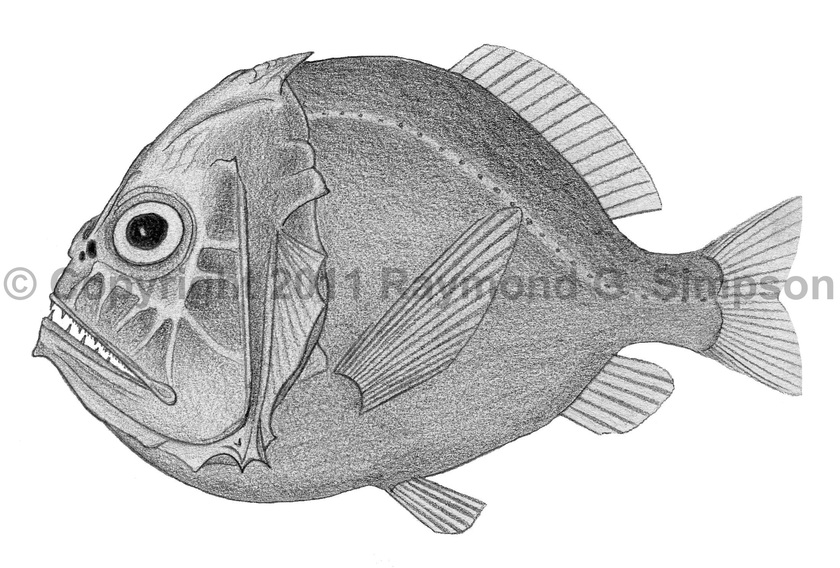
Common Name
Shorthorn Fangtooth
Year Described
Kotlyar, 1986
Identification
Dorsal Fin: 16-20
Anal Fin: 7-9
Pelvic Fin: 7
Pectoral Fin: 13-16
Vertebrae: 28
Body stout, compressed and deep with a huge head. Larger specimens with fang-like teeth on premaxilla and dentary; juveniles with villiform teeth. Vomer and palatine without teeth. Conspicuous ridges on head around sensory canals. Dorsal fin single, without spines. Caudal fin emarginate. Scales small and raised. Lateral line an open canal. No ventral scutes. Juveniles with very short parietal and preopercular spines (up to 5% SL in 20mm specimens and up to 1.7% SL in 60mm specimens). Spines apparently disappear in adults.
Color
Body entirely dark brown to black.
Size
Largest confirmed specimen 60mm SL. Adults undescribed.
Habitat
Apparently mesopelagic or bathypelagic.
Range
A few confirmed records from the Gulf of Mexico, the Bahamas, and the SE U.S. Likely more widespread.
References
Kotlyar, A. N. 1986. Classification and distribution of fishes of the family Anoplogasteridae (Beryciformes). Voprosy Ikhtiologii v. 26 (no. 4): 531-551. [In Russian. English translation in Journal of Ichthyology 1987, v. 27 (no. 1):133-153.
Moore, J.A. 2002. Anoplogastridae. In: FAO Species Identification Guide to Fishes of the Western Atlantic. (ed. Carpenter K), pp. 1178-1179. UN FAO Publishers, Rome.
Other Notes
Juvenile illustrated as only diagnosed from juvenile specimens. Adults of Anoplogaster have no described diagnostic features to separate the two species.